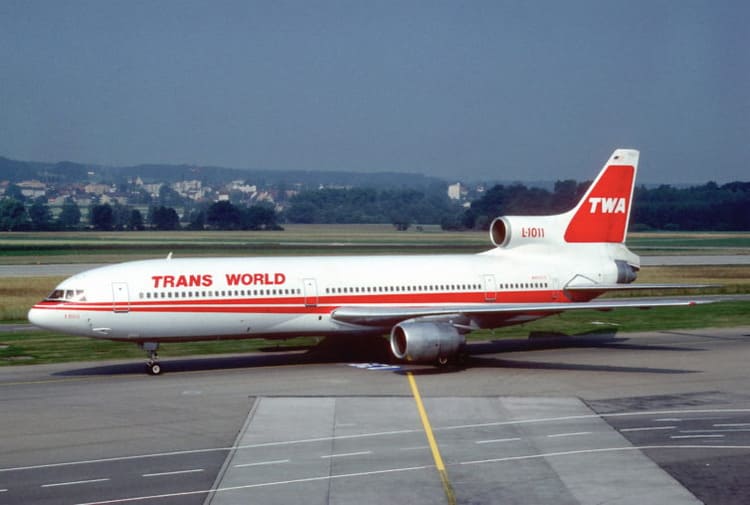Flying today is all about efficiency—more seats, tighter spaces, and getting from point A to point B as quickly as possible.
But back in the 1970s, airlines approached things differently.
Comfort and style were just as important as getting you to your destination. And if you were lucky enough to fly on a TWA L-1011 TriStar, you experienced an era of air travel that feels almost unimaginable today.
This wasn’t just another wide-body jet.
The Lockheed L-1011 was packed with innovative cabin features that made flying feel special, from exclusive lounges to swivel seats to a unique under-floor galley known as the “Belly Deli.”
Let’s take a trip back in time and explore what made this aircraft so legendary.
A Coach Lounge? Believe It!
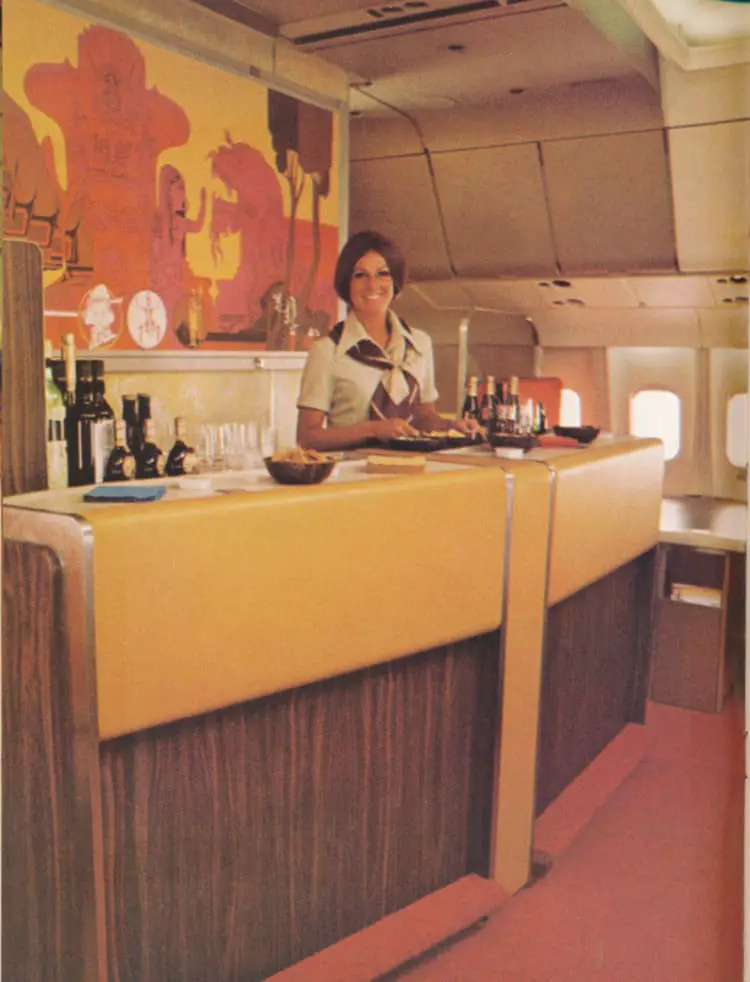
Photo: Lockheed / Flight Path Museum
Most airlines today try to fit as many seats as possible into economy class, but TWA had a different idea.
Their L-1011s featured a dedicated coach lounge—a luxury even first-class passengers would envy today.
The lounge had seating for 10 passengers, although two of the seats couldn’t be used for takeoff and landing.
Unlike the cramped rows of today’s economy class, this space gave passengers room to stretch out, socialize, or just enjoy a break from their seats.
And here’s the kicker: except in rare overbooking situations, these seats weren’t even sold. That meant the lounge was a bonus for those lucky enough to snag a spot.
This wasn’t just an attempt at extra comfort—it was a reflection of how airlines once prioritized passenger experience over squeezing in extra revenue.
Swivel Seats and Dining in the Sky
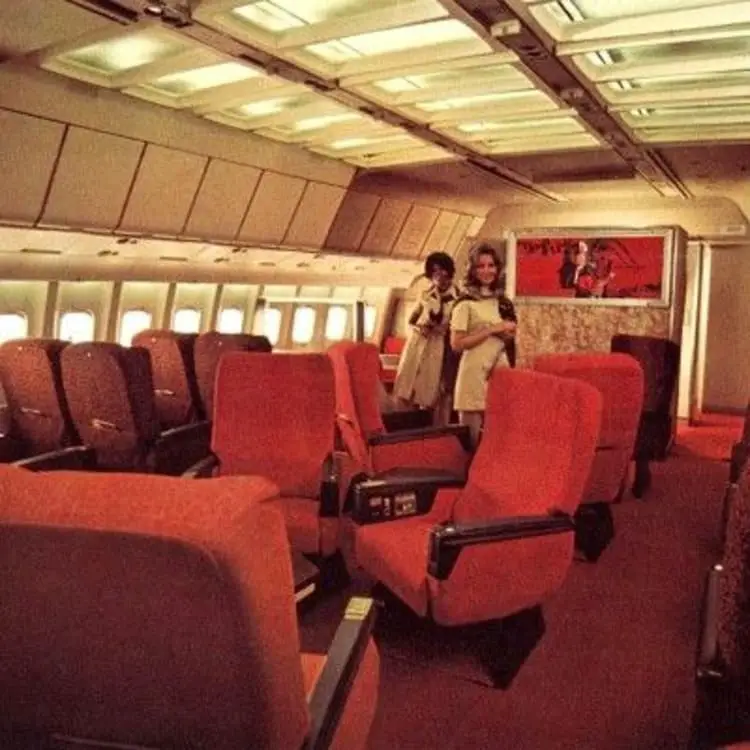
Lockheed / Flight Path Museum
First-class passengers had their own perks, starting with one of the coolest features ever seen on a commercial plane: swivel seats.
If you were seated in the center section of first class, you could turn your seat 180 degrees to face the row behind you. It was perfect for groups traveling together, allowing them to chat and dine as if they were at a restaurant rather than in the sky.
To complete the experience, cocktail tables between the seats could expand into full dining tables, making meal service feel elegant and unhurried. Passengers weren’t just handed a plastic tray—they were served a proper meal, with real tableware, in an environment designed for comfort.
No Carts in the Aisles: A New Approach to Meal Service
One of the biggest complaints about flying today is how meal and beverage carts block the aisles, making it nearly impossible to get to the restroom or stretch your legs. But on the TWA L-1011, meal service was designed to keep the cabin feeling open and uncluttered.
Instead of rolling bulky carts through coach, flight attendants served passengers directly from satellite service centers located between the doors.
Before the meal service began, hot entrees were placed in compartments near these service centers, while beverage carts were stored nearby. while beverage carts were stored nearby.
This allowed flight attendants to bring food and drinks to passengers individually, keeping the aisles clear and making the whole experience feel more personal.
It was an airline’s way of saying: “We want you to feel comfortable,” rather than just getting through meal service as quickly as possible.
The “Belly Deli”: The Under-Floor Galley That Streamlined Service
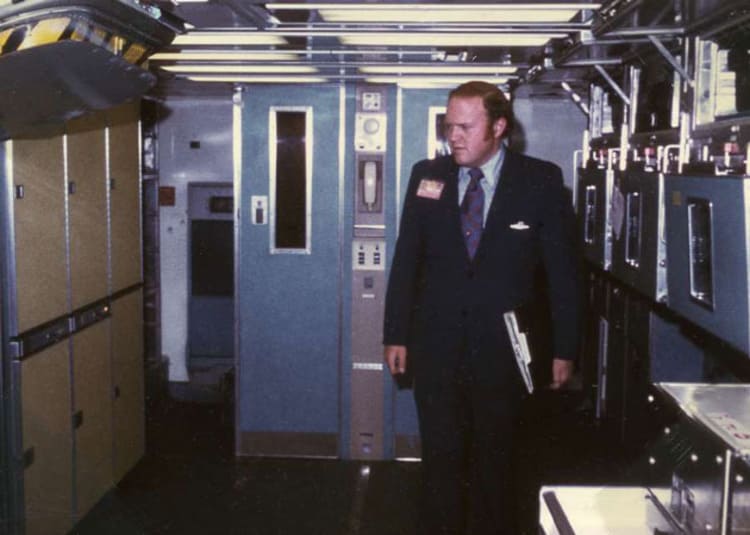
Photo: Jon Proctor (www.jonproctor.net)
While passengers enjoyed their meals, the real magic was happening below their feet.
The L-1011 featured an under-floor galley, accessed by elevators that transported meals up to the main cabin. TWA flight attendants nicknamed it the “Belly Deli”—a fun way to describe the hidden kitchen that made meal service so seamless.
This design had several advantages.
First, it kept the main deck free of large galleys, allowing for a more spacious cabin. Second, it gave the crew a dedicated space to prepare meals without disturbing passengers. And finally, it allowed food and beverage supplies to be loaded through a separate service door, rather than being stored in the cargo hold, as was the case on some other aircraft.
It wasn’t perfect—the smaller loading door meant that some equipment had to be specially sized—but it was an innovative approach that made meal service feel smooth and well-organized.
Overhead Storage—Or Lack Thereof
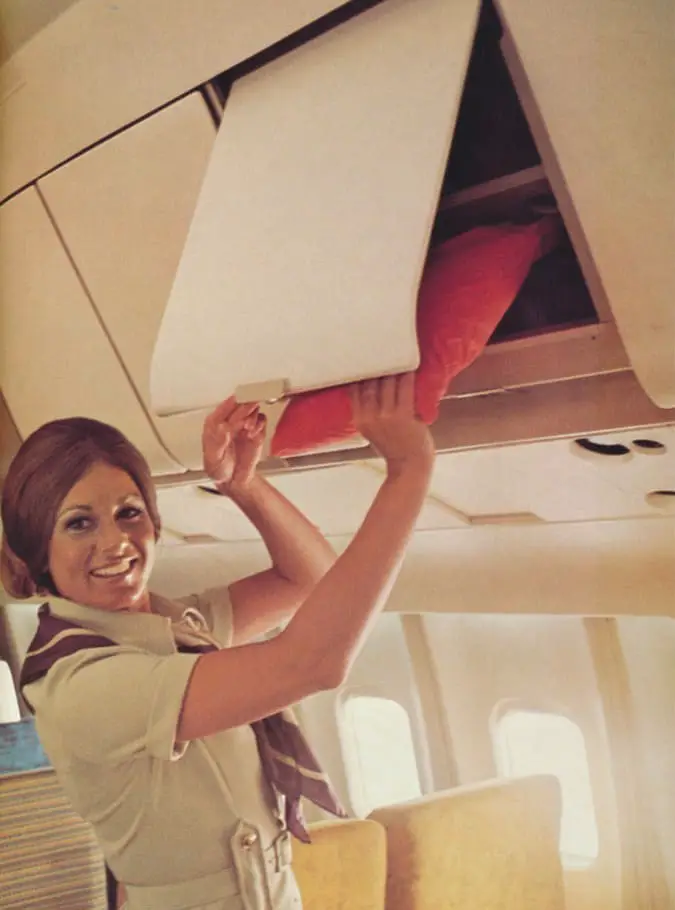
Photo: Lockheed / Flight Path Museum
If you think overhead bins are a tight fit today, imagine flying on an aircraft that didn’t have center overhead bins at all!
Lockheed wanted the L-1011’s cabin to feel open and spacious, so they removed the centerline overhead bins entirely. Instead, passengers were given waist-high carry-on compartments near the boarding doors.
This was great for aesthetics—it gave the plane a sleek, uncluttered look—but it also meant passengers had to be more mindful about what they brought onboard. Unlike today, when people try to fit oversized suitcases into overhead bins, carry-on luggage in the 1970s was often smaller and lighter, making this system workable.
The Legendary “Cannery Row”
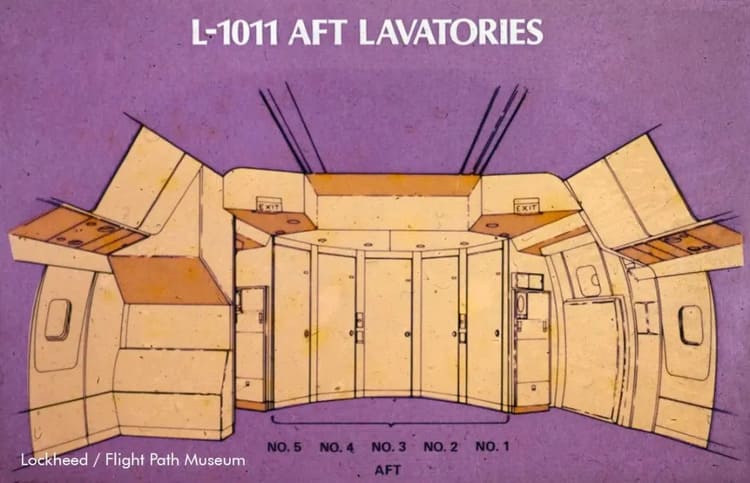
Every aircraft has an area that becomes notorious among the crew. On the L-1011, that was “Cannery Row.”
This was the nickname given to the five coach lavatories located at the rear of the aircraft, just behind the No. 4 doors. With 176 coach seats and just seven total lavatories on the plane, this area could get busy.
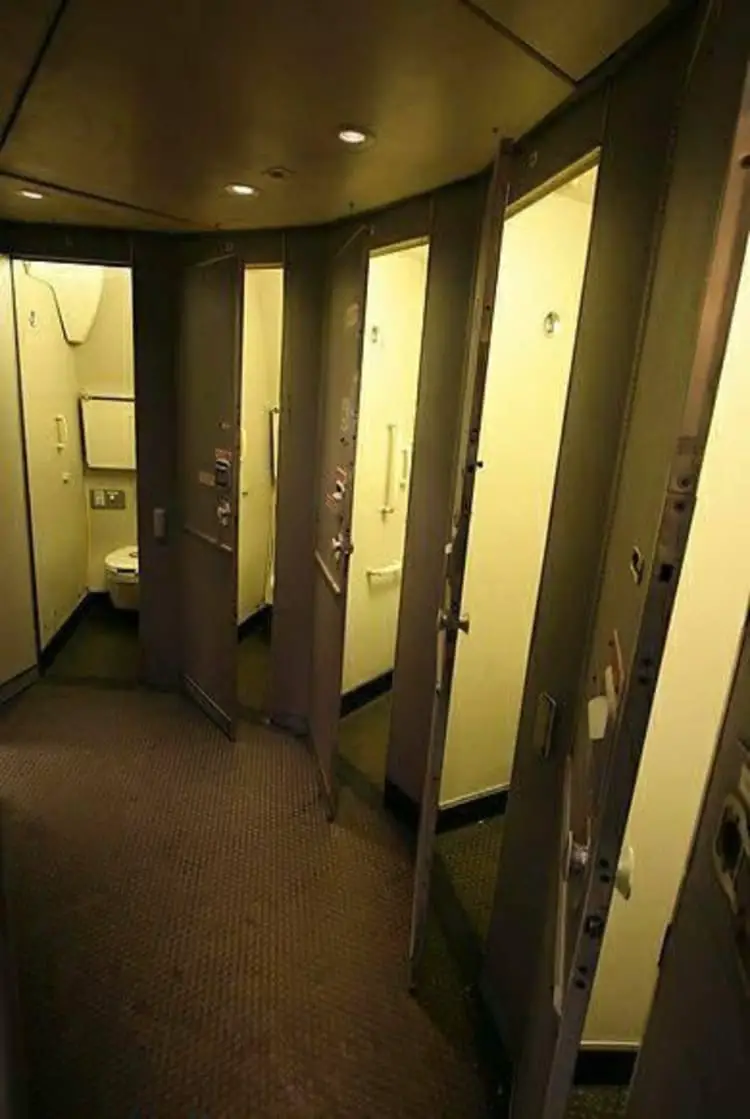
It might not have been the most glamorous part of the aircraft, but it was a necessary feature of the L-1011’s design. And for flight attendants, it was just another part of the job—one that likely came with a few good stories!
An Era of Air Travel We Won’t See Again
The TWA L-1011 wasn’t just an aircraft; it was a statement about what air travel could be. It proved that airlines could prioritize passenger experience without sacrificing efficiency.
- A coach lounge that gave economy passengers a rare space to relax.
- Swivel seats and fine dining that made first class feel like a true luxury experience.
- A thoughtful meal service design that kept aisles clear and movement easy.
- A hidden galley that made service seamless.
- A focus on spacious design, even at the expense of overhead storage.
Flying today is different—more crowded, more rushed, and more focused on cost efficiency than comfort. But for those who flew on the L-1011, it was an experience they never forgot.
For passengers and crew who lived it, the TWA L-1011 was more than just a plane—it was a golden age of air travel.
